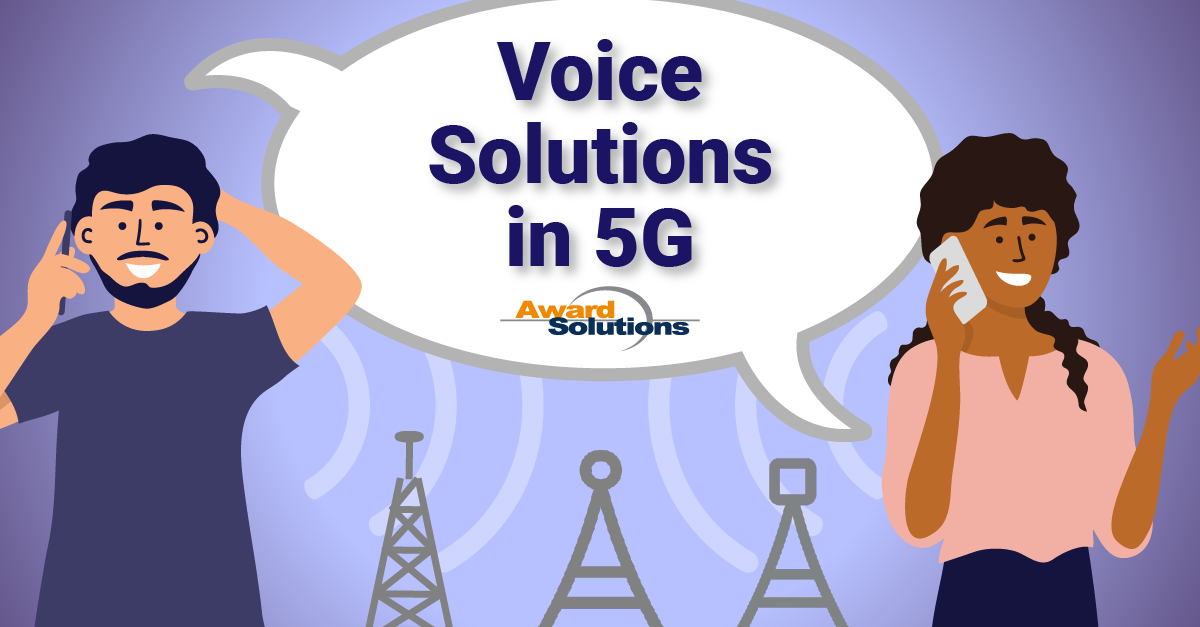
Data service is a major driving factor for 5G evolution; however, voice service continues to be essential for carriers. Therefore, the 5G network offers different voice solutions for a UE, based on 5G RAN readiness, to support the required Quality of Service (QoS) for voice service.
In the initial 5G Non-Standalone (NSA) deployment option 3x, while the UE is within LTE coverage, UE always uses the LTE network to make voice calls. However, Standalone (SA) deployment offers multiple voice options based on New Radio (NR) coverage availability, and 5G RAN capability to support voice QoS. While the UE is in 5G NR coverage, and if the 5G RAN supports the required QoS for voice service, the UE can obtain voice service through the Voice Over NR (VoNR) solution. Alternately, when the UE is within 5G NR coverage and the 5G RAN is not ready to support the required QoS for voice service, as an intermediate solution, the UE can obtain voice service either through the EPS fallback or RAT fallback solution. Finally, when the UE reaches the 5G cell edge while still in a VoNR call, if VoLTE service is unavailable outside of the current 5G cell, but 3G coverage is available, 5G Single Radio Voice Call Continuity (SRVCC) enables the UE to continue its voice call on the 3G network.
VoLTE in 5G Non-Standalone (NSA) Option 3x
Voice over LTE service continues in NSA deployment option 3x irrespective of if the 5G RAN is ready to support the required QoS for voice service. UE achieves Voice over LTE service by leveraging the IMS, EPC, and 4G RAN.
Voice Over NR (VoNR)
The Voice over NR (VoNR) solution offers voice service to the UE through 5G New Radio by leveraging the IMS, 5G core, and 5G RAN.
EPS Fallback
The EPS fallback solution comes into the picture when the UE is registered to the 5G network and initiates a voice call. If the 5G RAN does not support the required QoS for voice service, then the 5G RAN initiates a handover or redirects the UE to the 4G RAN, which is connected to the EPC, to obtain VoLTE service.
RAT Fallback
Like EPS fallback, the RAT fallback solution comes into the picture when UE is registered to the 5G network and initiates a voice call, and the 5G RAN does not support the required QoS for voice service. However, unlike EPS fallback, the 5G RAN initiates a handover or redirects the UE to the next generation 4G RAN connected to the 5G core to obtain voice service.
5G SRVCC (5GS to 3G)
The 5G Single Radio Voice Call Continuity (SRVCC) feature defined in 5G Release 16 supports voice call continuity even when the UE moves out of 5G coverage. For example, consider a scenario where the UE is in a VoNR call and has reached the edge of 5G coverage. If the operator does not have an LTE network to offer VoLTE, or if the available LTE network is not preferable for voice call continuity due to the existence of VoLTE coverage holes, then 5G SRVCC enables the UE to hand over the voice call from the 5G network to the 3G network, if available, leveraging the IMS, CS core and 3G RAN. 5G SRVCC is indirect SRVCC from the 5G RAN to the UTRAN with zero involvement from the LTE eNB. 5G Release 16 supports SRVCC only from the 5G RAN to the UTRAN but not vice-versa. In addition, 5G SRVCC does not support SRVCC from the 5G RAN to 2G or vice-versa. 5G SRVCC applies to both IMS calls and emergency calls.
